Back in the 5th century AD, St Patrick (386-461AD) used a three-leaved clover to explain the mysteries of the holy trinity to Ethne the Fair and Fedein the Red, the daughters of the fierce pagan king of Ireland, Loaghaire, who reigned as emperor of the Barbarians from approximately 450-480AD.
Interestingly, St Patrick has never been canonised. The first official saint (St Ulric), was made a saint by Pope John XV in 993. Until that time the Catholic church had no official ritual for canonisation and St Patrick has never been officially canonised since. Despite this he is now universally known as Ireland’s primary patron saint and he’s become one of the most popular saints ever - right up there with St Francis and Joan of Arc. The three leaf clover metaphor (trifolium means three leaved in Latin) clearly didn’t do his, or the cause of Chistianity, any harm (St Patrick is credited with having converted Ireland to Christianity).
There are over 300 types of clover growing in the Northern hemisphere, but only three candidates qualify as possibly being the original “Shamrock” made famous by St Patrick: The Lesser or Yellow Clover (Trifolium Dubium), White Clover (Trifolium Repens) and the third candidate, put forward by old John Gerard (1545-1612), the Red Clover (Trifolium Pratense), or, as he called it, Medow Trefoile and Three Leafed Grasse. In his handwritten, 1,484 page herbal, he wrote that Red Clover was, definitively, the Shamrock.
The word Shamrock comes from Irish, Seamrog, which means little clover. And although Gerard declared Red Clover as the true Shamrock, the most popular candidate today is Lesser or Yellow Clover, with White Clover a close second.
In terms of religion and spirituality, clover is not only historically linked to Christianity. It was important to druids too, being one of the seven sacred herbs they used to ward off evil spirits. The other six herbs considered sacred were henbane, mistletoe, monkshood, pasqueflower, primrose and verbena.
Red Clover seeds were exported from Holland, along with the origin of the word. The Dutch word ‘Claver’ or ‘Klaver’ became ‘Claefre’ in Old English. Some suggest that ‘Klaver’ comes from the verb ‘Kleven’ which we can trace back to the PIE word Gleih (to cling or stick). Clover isn’t particularly sticky though. Some suggest the word refers to the way Clover grows close to the ground, as if clinging or sticking to the earth. Others think this explanation is pushing the bounds of plausibility and suggest that the word Klaver derives from a much older word (unknown) from North West Europe that predates PIE, as Clover has been grown for millennia before PIE and herders would have needed a word for such an important forage species.
Red Clover is also known as Bee Bread. Bumblebees love it. Other species of bee, with their shorter proboscises, sadly can’t reach deeply enough into the flower to get at the nectar.
Other names for Red Clover include Honeystalks, Cow-cloos, Honey-suckle Clover, Knap, Marl Clover, Meadow Clover, Meadow Trefoil, Sleeping Maggie, Sookies, Soukie Clover, Suckies, Suckling, Sugar Plums, Cow Grass, Marl Grass, Pinkies and Purplewort. Quite a variety. Most names refer to the sweetness of the nectar. You can suck the end of the flower heads to taste the sweetness for yourself if you’d like to sample what the bumblebees find so attractive. Other names refer to Clover’s use as fodder for cattle. Cows love it too. The Latin word ‘Pratense’ means ‘from the meadow’.
And then there is of course the power and the luck that folklore associates with the four leaf clover. Since the middle ages it was recommended that if you were lucky enough to find one, you should carry it with you at all times as it supposedly prevented madness and protected you from witches and their spells, could make you clairvoyant, protect you from blindness, prevent accidents and provide resistance to the malicious bewitchment of your cattle.
Four leaf clovers also had a use when it came to romance: you could find out who would be your future husband or wife by placing the four leaf clover under your pillow and they would appear to you in your dreams or, alternatively, if you put it in the shoe of the one you were in love with, they would come to you in real life. All extremely useful. One can imagine there being scores of people searching the meadows for four leaf clovers up and down the land. Unfortunately there was a catch: you only benefit from the power and the luck of a four leaf clover if you find it by accident. With roughly only 1 in 10,000 clovers being four-leaved you’d have to be pretty lucky in the first place to find one, particularly without looking for it.
This newsletter is NOT a field guide for flower identification. It’s often difficult to tell the difference between harmless plants and poisonous plants and some flowers are rare and protected by law, so, NEVER pick or use any plants or flowers if you’re not sure about them.
illustrations and text ©Chantal Bourgonje








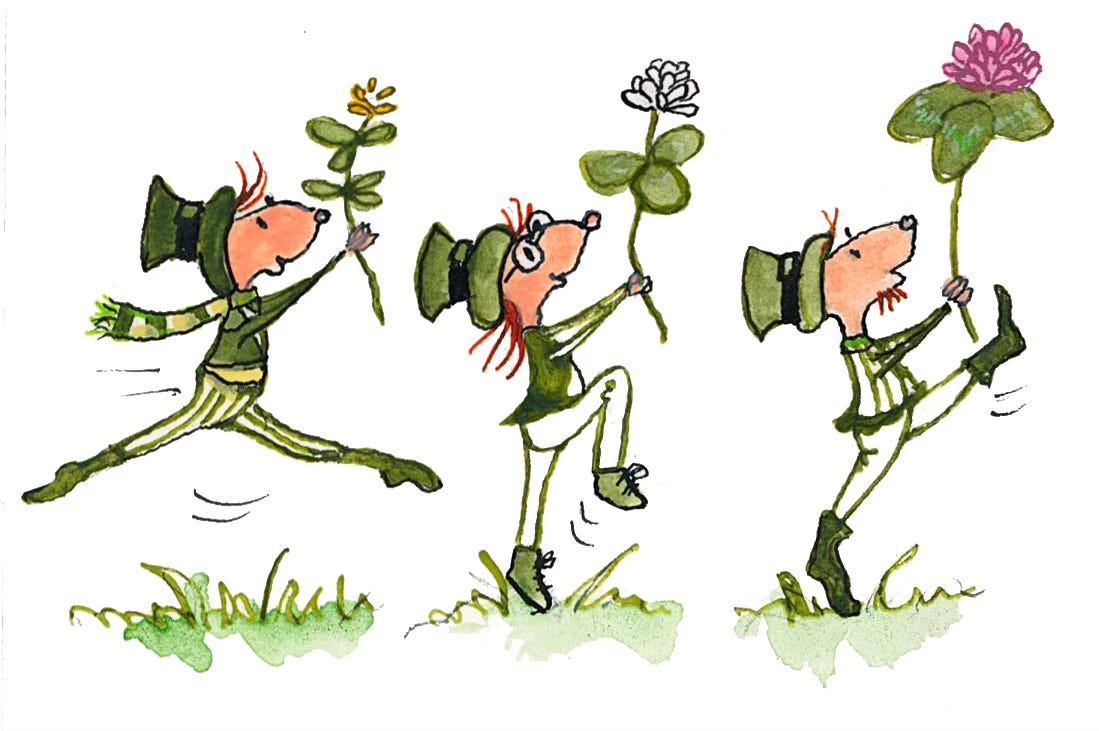

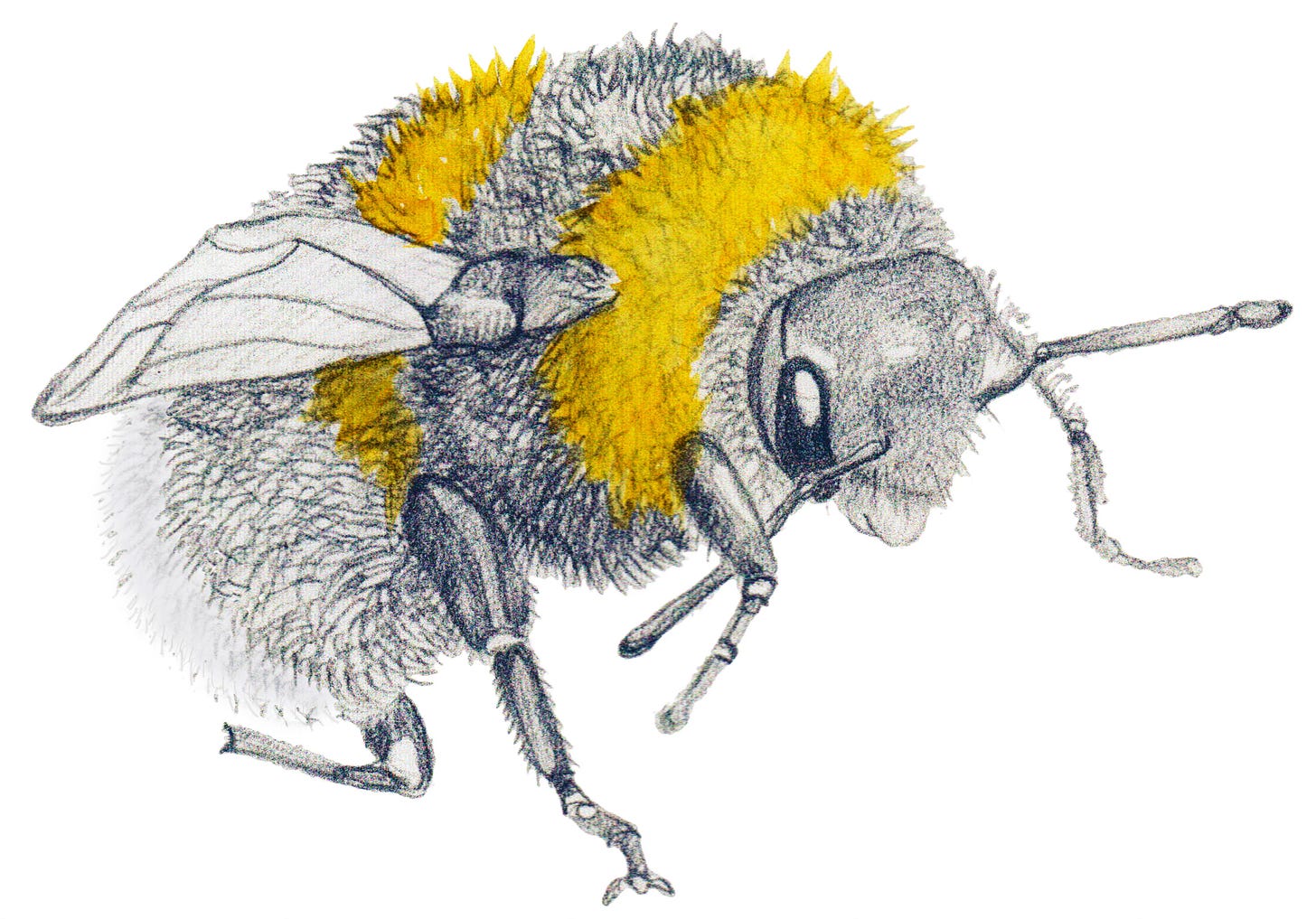

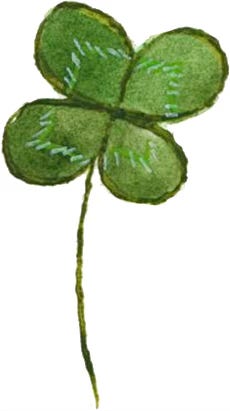
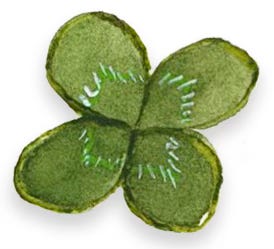
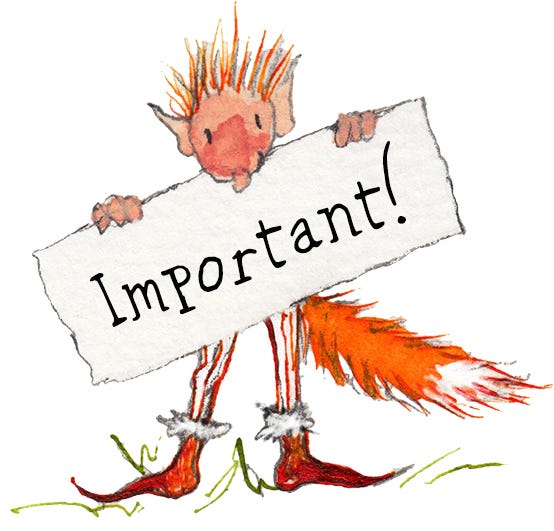
Thank you, I found this really interesting - lots that I didn't know. I especially liked the bumblebee illustration, I am enjoying seeing them buzzing around again this spring.
So interesting about the bumble bee vs other bees and their access to nectar from the red clover. Red clover is our “state flower” but I recently learned it’s not native to Vermont, (where I live.) thanks for sharing!!